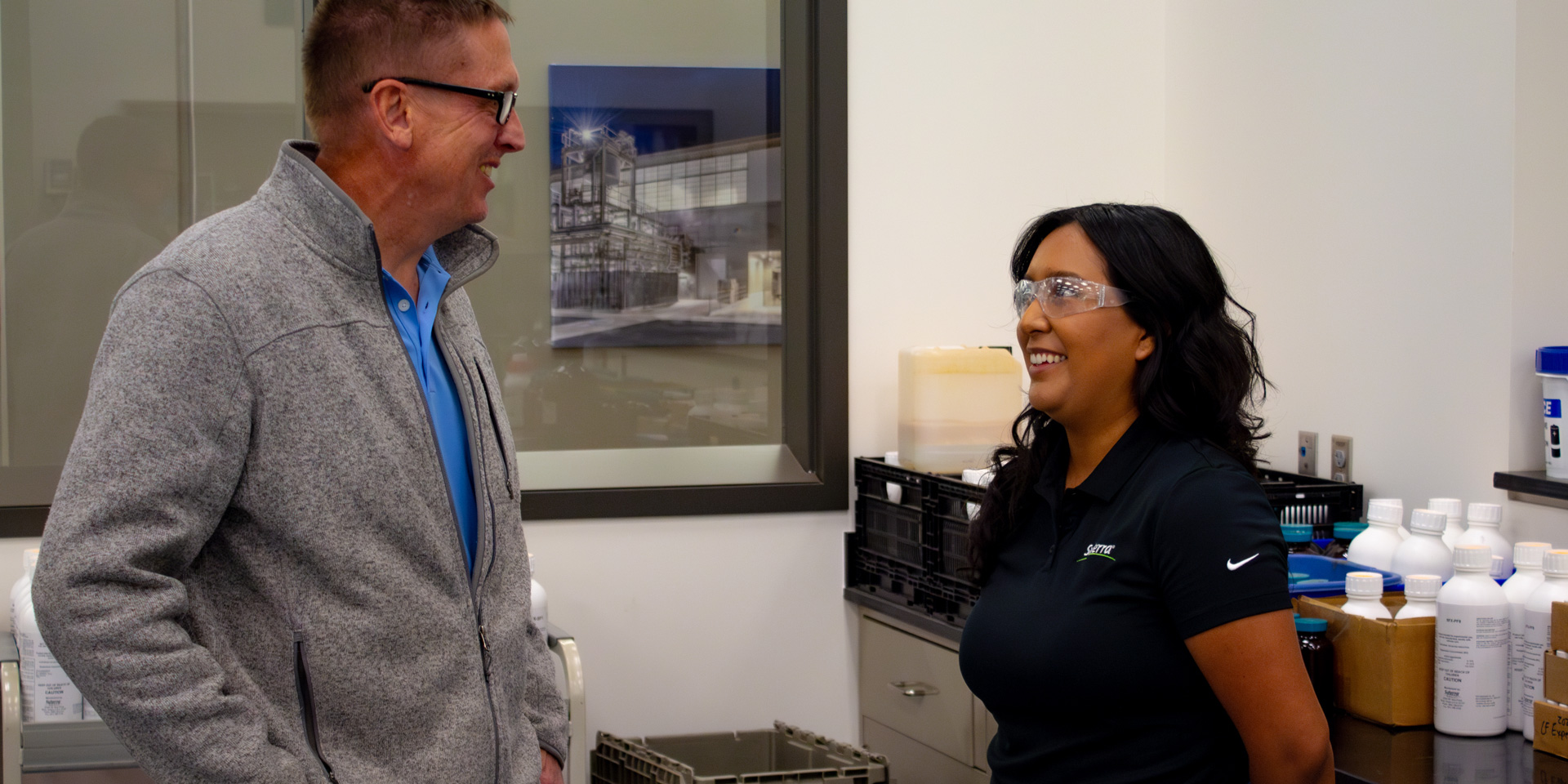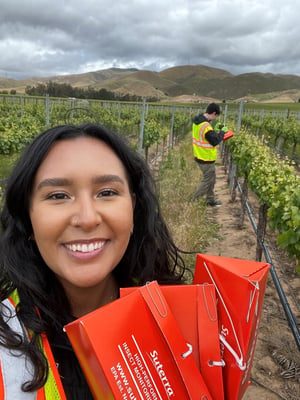From the Lab to the Field– How Suterra Delivers the Highest-Quality Products
Suterra
Jun 22, 2023 2:59:49 PM


Field trials are essential throughout the product development process at Suterra, and our laboratory and field teams work together every step of the way.
Learn more about Suterra’s product development approach and why it is integral to our goal of producing high-quality products that put the grower first.
Over nearly four decades as the pioneer of pheromones and mating disruption, Suterra has continuously invested in laboratory facilities that allow our experts to be at the forefront of innovation in the fast-paced nature of the semiochemical industry.
Agricultural mating disruption is an expanding industry and one that requires a significant amount of early-stage research for each new pest and product that is developed. Insects use species-specific chemical cues (i.e., pheromones) to communicate with one another, and those chemical cues must be replicated in the various mating disruption release platforms. Depending on the behavior and ecology of each pest, different platforms (e.g., microencapsulated sprayable pheromone, aerosol Puffers®, high-density dispensers) are optimized to provide maximum efficacy for each unique pest and cropping system.
When dealing with the complexities of new product development and continuous improvement, Suterra recognizes the need for vertical integration of the company’s capabilities and cross-functional teamwork among its various experts. Unique for a company of its size, Suterra achieves continuous communication and connection between the lab teams and all other relevant teams, especially our boots-on-the-ground Technical Team conducting trials out in the field.
Across Suterra’s many departments, employees have lauded the benefits of open cooperation between work teams. Rather than simply passing off a completed project to the next team down the line and never hearing back, the development process between the lab and field teams is a constant cycle of inquiry, experimentation, analysis, and re-evaluation.
In addition to adhering to the scientific method, the constant back-and-forth and exchange of knowledge between the lab and field teams allows each to understand how their colleague groups tick.
When asked when the lab team generally initiates field trials in the development process, Dr. Eric Black, Head of Formulation Research, Ph.D., had a simple answer: “As early as humanly possible.”
This early start in the field leaves a recognizable mark in Suterra’s product lines: our mating disruption products are not simply built on theory but on results. When a product is brought to market, our laboratory and field teams have been cooperating for years to produce a solution that works to the highest efficacy in the real-world environment in which it was designed to operate.
Dr. Black explains some hypotheticals that make early field trials so important.
“If we develop a product that doesn't have any ability to release, say, in the cooler morning temperatures, that can be a problem if that’s when all the insect activity is. Oftentimes in a product, there's a lot of input from the tech team to get us steered in the right direction so we’re not developing something that's going to miss the target.”
Achieving tangible, measurable results with a new product is equally rewarding for the team out in the field. Suterra’s Dr. Emily Symmes, Senior Technical Field Manager, describes how the first deployment of a product fresh from the lab can feel.
“When we take a product out to the field for trials, it’s exciting for me because we’re asking the insect to give us answers. Does this mean anything to you? Does the information we’ve gained from the lab translate once we get it out in the field? You’re taking something brand new to an insect that's never been confronted with what is akin to a synthetic version of itself and determining how it reacts. And then back at the lab, Eric is asking Is this formulation working? Are the insects offering us new insights? Do we need to do something different?”
Above all else, Suterra’s goal is to bring the best possible product to the grower. The integration between our lab and field experts makes it possible to turn this goal into a reality.
When new products are tested in real-world field environments from their inception, they are evaluated against climate variation, pest pressure and behavior fluctuations, and the operational realities of an agricultural environment that cannot be replicated in the lab. This approach also optimizes each product for the diverse real-world situations where growers may be cultivating their crops.

Additionally, Dr. Black explains that Suterra’s commitment to quality does not stop after a product first bears results.
“Just because we have something that has been declared a success when we put it out into the field, we don't stop there. You have to continue to follow up and make sure the best product possible is out there. We may get new information that could help us improve the product even more, and there might just be some small tweak that needs to be made. And we're the ones that are going to be doing that.” If you have questions about careers at Suterra or our commitment to high-quality mating disruption products, we are happy to connect you with an expert or contact your local representative.